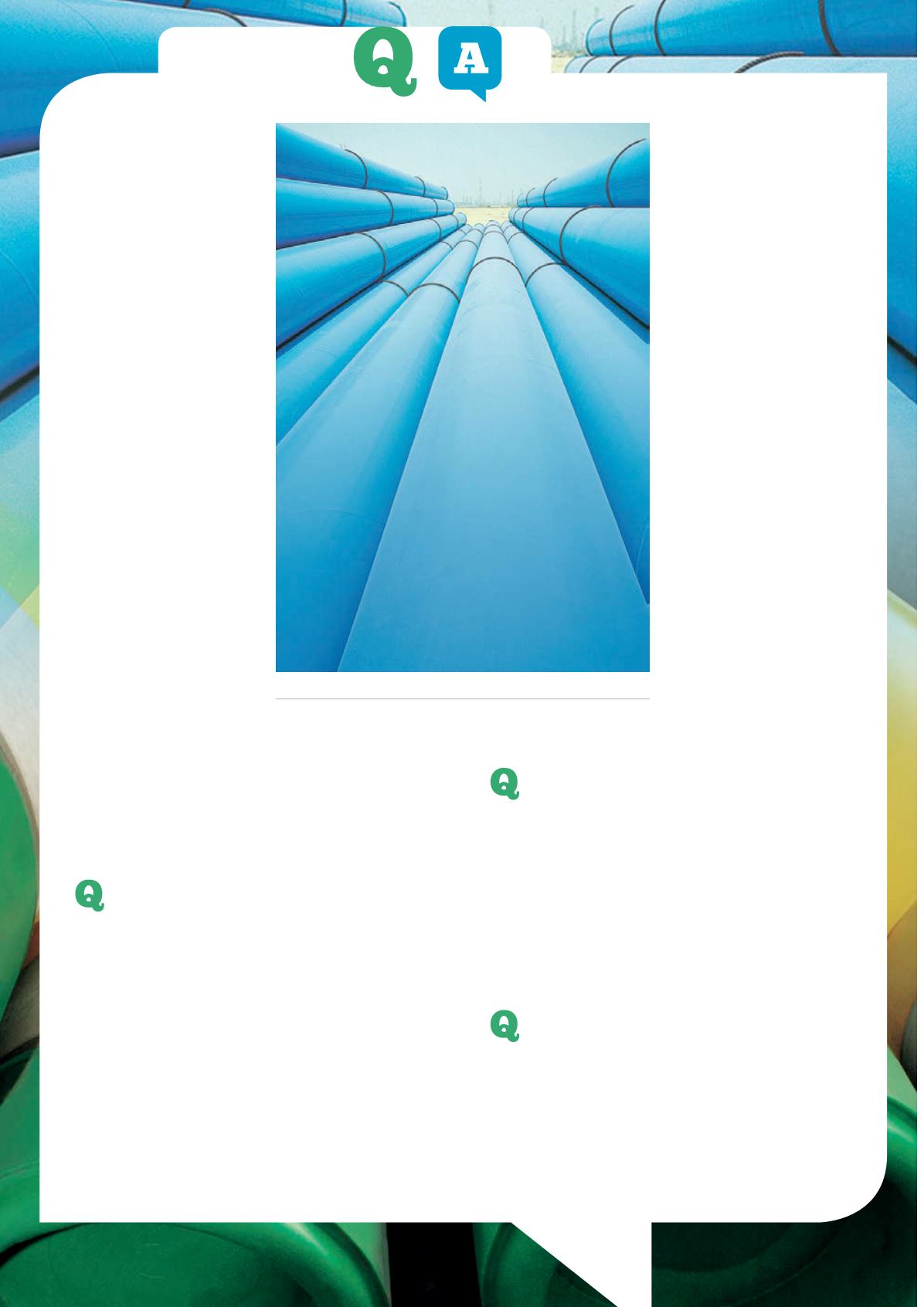
Coatings
&
(yet) agreed on the test
protocols for this said new
radical innovation product,
it becomes more difficult to
develop because research
and development does
not have a full overview
of how it is going to be
tested. Development of a
FBE coating that performs
above 130°C as a stand-alone
coating would be a case in
point.
Applicators/pipe mills
have also changed the
coating process by improving
the quality of automatic
bending, fabrication and
welding of sheet steel
and coil into pipe forms.
Technology in the coating
plant has also improved
to provide an even greater
control of the process, which
is very welcome, as the risk
of coating failure increases
dramatically through poor
surface preparation and
coating application.
As the types of steel used
to form pipe have changed,
coating technology has had
to adapt. The introduction
of high strength X grade steels for high pressure, strain-
based design pipelines has led to the development of
new low application temperature (LAT) FBE coatings.
These coatings, such as Jotapipe LT, can be applied at
temperatures lower than 200°C (392°F) [even as a stand-
alone], above which the tensile strength high grade steels
is affected.
How would you reassure someone
doubting the efficacy of today’s
pipeline coating systems?
A track record spanning multiple decades from all leading
manufacturers is testament to the performance capability
of pipeline coating systems – whether that be liquid,
powder or a combination thereof in multi-layer coating
systems. Jotun has a track record of protecting more than
130 000 km of pipeline with its coatings.
All mainline coating products are thoroughly
tested in-house as well as at third party international
laboratories, demonstrating compliance with all major
global standards. Even though standard long-term FBE
coating performance tests, such as hot water soak (HWS)
and cathodic disbondment (CD), call for a 28 day test
period, most manufacturers, including Jotun, now run
these tests for 56 days, 84 days or even longer in order
to be able to evaluate and
have access to even more
data points to demonstrate
longer-term performance.
Cost savings generated
by the use of internal flow
coatings have been widely
documented since the 1970s
and the benefits of installing
internally coated pipe have
been promoted by all of
the major manufacturers.
Detailed research is still
ongoing into pipeline flow
efficiency and the savings
gained by such efficiency
– coated versus uncoated
pipelines. There will always
be an argument against
internal coating, usually
the cost, but looking at
the long-term ownership
and efficiency of a non-
corrosive gas pipeline,
internal lining should be
viewed as a primary solution
for flow enhancement.
Some but sadly not all
gas majors are following
this train of thought.
Internal flow coatings can
also provide a degree of
corrosion protection in
storage as well as other benefits.
What kinds of problems have led to
coatings failures?
There are many reasons for coating failures and the
following list is not exhaustive and will be complimented
by others – poor surface preparation and application in
the factory, inadequate (specification-driven) girth weld
or field joint protection (both external and internal),
poor choice of coating type and supplier (companies
who representatives sell on performance claims that
cannot be substantiated), incorrect operating conditions
(temperature, media type or chemical composition),
insufficiently detailed specifications.
What surface preparation is required
at the most basic/at higher
functioning levels?
Surface preparation standards are well documented and
are usually followed to a very high standard at all plants,
but if a pipe coating fails, one of the main causes is poor
surface preparation. It has been estimated that up to
75% of all coating failures are the result of inadequate or
improper surface preparation.
1
Contamination of the steel
surface caused by dust, grease, oil, mill scale or soluble
Figure 1.
Pipe stack showing FBE-coated pipe.
50


